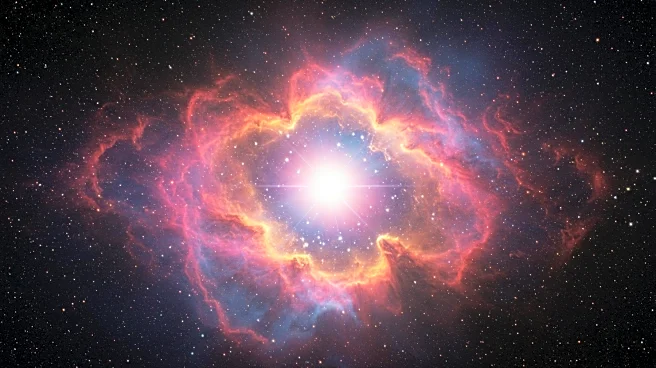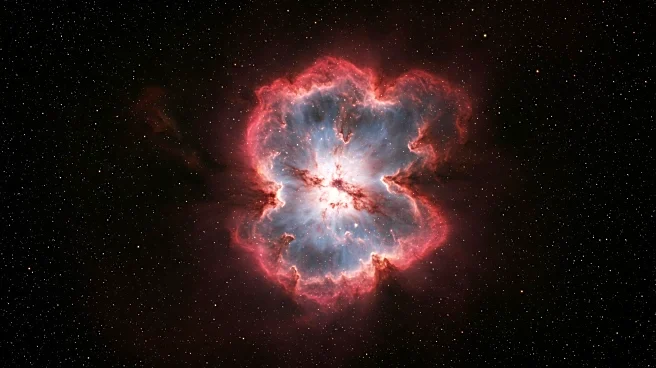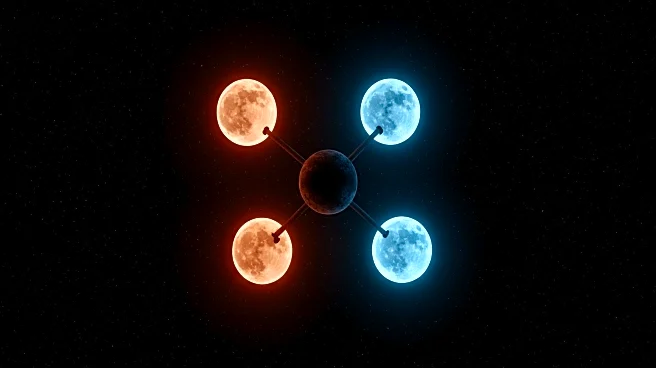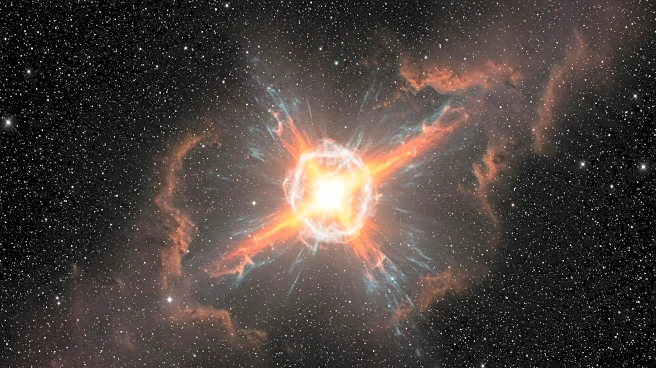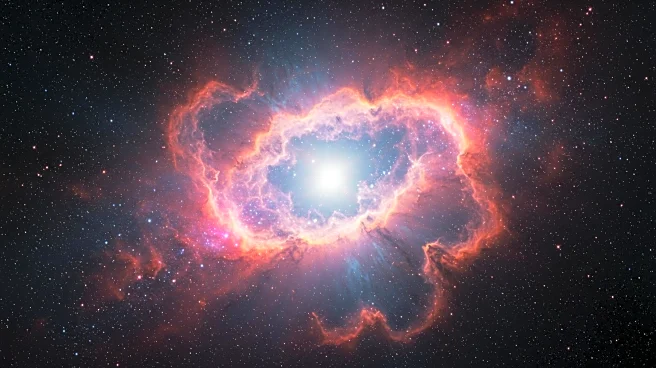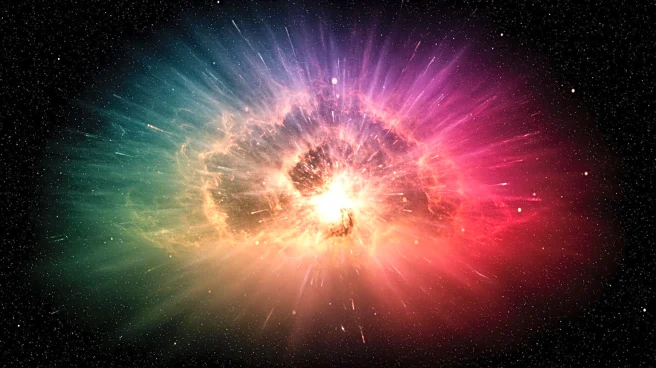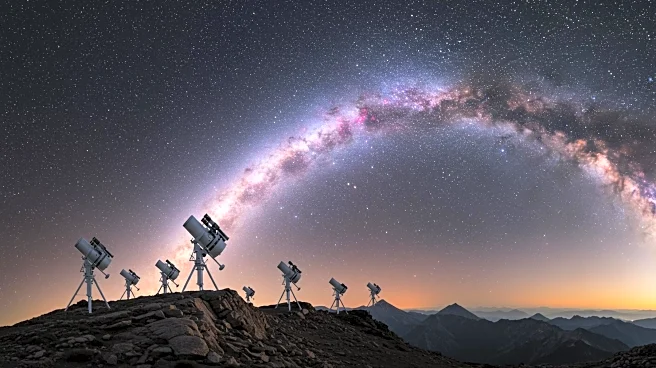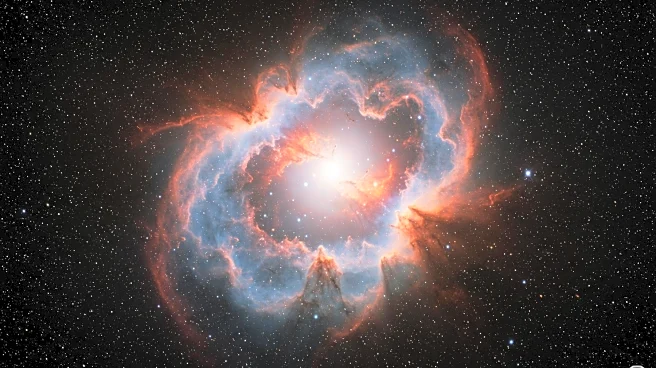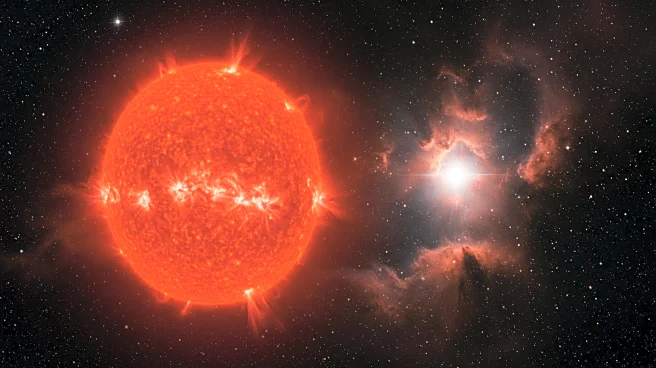What's Happening?
Astronomers have captured a striking new image of the nebula MSH 15-52, which some say resembles a hand, using a combination of data from the Chandra X-ray Space Observatory and the Australia Telescope Compact Array. The nebula, located approximately 17,000 light-years from Earth, is centered around a pulsar, the dense remnant of an exploded star. This pulsar, designated B1509-58, is responsible for the intricate structure of the nebula, which spans over 150 light-years. The image reveals a perplexing sharp boundary of X-ray emission, which researchers are still trying to understand, as it lacks the expected radio signal typically associated with supernova remnants.
Why It's Important?
This discovery provides valuable insights into the complex interactions between pulsars and their surrounding environments. Understanding these interactions can enhance knowledge of stellar evolution and the life cycles of stars. The image also highlights the capabilities of modern astronomical technology in capturing detailed cosmic phenomena. Such discoveries can inspire further research and interest in space exploration, potentially leading to new scientific breakthroughs. The study of nebulae and pulsars also contributes to the broader understanding of the universe's structure and dynamics.
What's Next?
Further research is needed to unravel the mysteries of the nebula's structure and the absence of radio signals at the X-ray boundary. Astronomers will likely continue to observe MSH 15-52 using various telescopes to gather more data. This ongoing research could lead to new theories about the behavior of pulsars and their impact on surrounding space. The findings may also prompt additional studies on other similar cosmic phenomena, expanding the scientific community's understanding of the universe.


